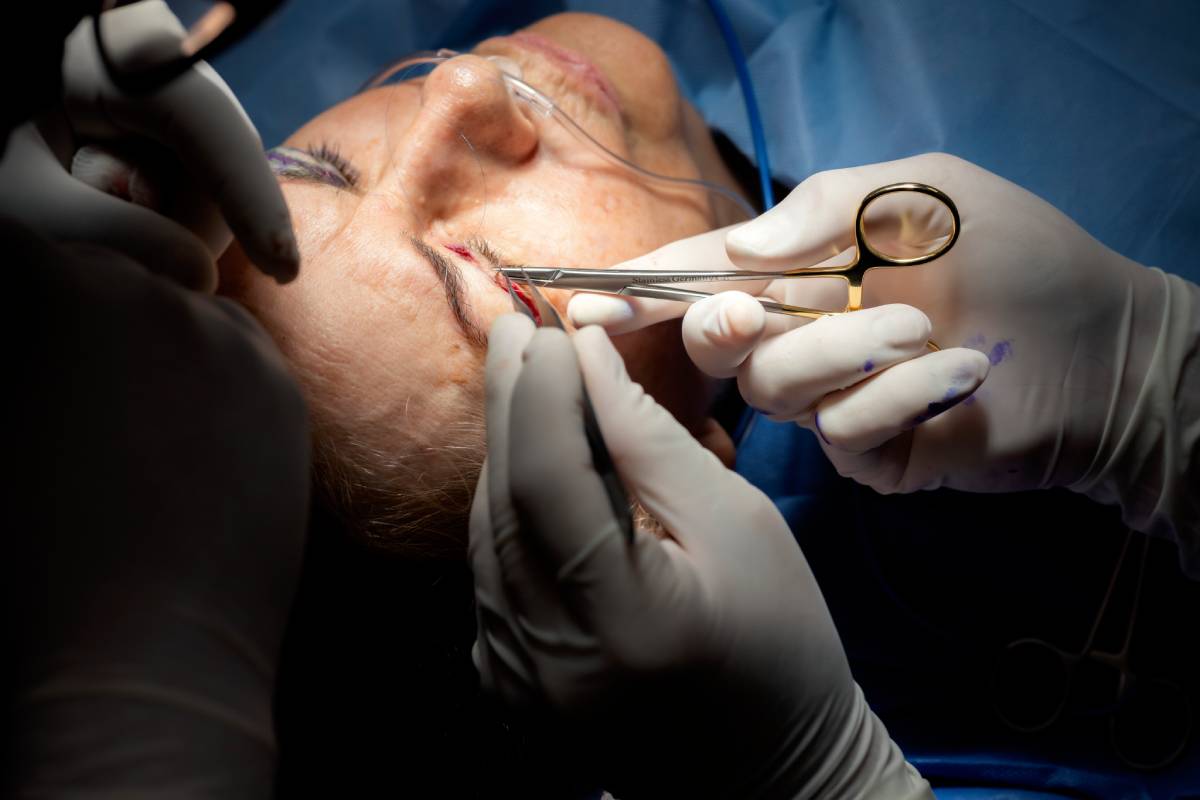Anesthesia for Eyelid Surgery

Eyelid surgery, also known as blepharoplasty, is a common cosmetic or reconstructive procedure aimed at improving the appearance and/or function of the eyelids 1. Whether performed for aesthetic enhancement or medical reasons, such as correcting drooping eyelids (ptosis) or addressing eyelid mispositioning, anesthesia plays a crucial role in ensuring patient comfort and safety during surgery.
When planning anesthesia for eyelid surgery, several factors must be considered to tailor the approach to the individual patient’s needs and the nature of the procedure. These considerations include the patient’s medical history, the extent and complexity of the surgery, the surgeon’s preferences, and the patient’s preferences and comfort level.
The choice of anesthesia for eyelid surgery may vary depending on the specific circumstances and preferences of the patient and the surgical team. In some cases, particularly for minor eyelid surgeries or procedures limited to the upper eyelids, local anesthesia alone may be sufficient to achieve adequate pain control and patient comfort. The surgeon may use a combination of lidocaine and epinephrine to provide anesthesia and minimize bleeding during the procedure.
Several different methods can be used to deliver local anesthesia 2. First, infiltration anesthesia involves injecting local anesthetic solution directly into the eyelid tissues, targeting specific nerve endings to block sensation. Careful infiltration techniques are essential to minimize discomfort and achieve uniform anesthesia across the surgical site. Second, a nerve block, such as an infraorbital nerve block or supraorbital nerve block, may be utilized to provide targeted anesthesia to specific areas of the eyelids. These nerve blocks can supplement local anesthesia and enhance pain control during eyelid surgery. Finally, topical anesthetic agents, such as lidocaine gel or cream, may be applied to the eyelid skin before injection of local anesthesia to reduce the discomfort associated with needle insertion. While topical anesthesia alone may not provide sufficient anesthesia for invasive eyelid surgeries, it can enhance patient comfort during local anesthesia administration.
In addition, sedation medications may also be administered intravenously to induce a state of relaxation and reduce anxiety during the procedure. Local anesthesia with sedation is often preferred for minor eyelid surgeries or procedures performed in an office-based setting 3,4.
General anesthesia, which involves the administration of medications to induce a state of unconsciousness and total loss of sensation throughout the body, may be preferred for more extensive or complex eyelid surgeries, such as those involving multiple eyelid regions or combined procedures with other facial surgeries 5.
Anesthesia for eyelid surgery requires careful consideration of patient factors, surgical requirements, and anesthesia options to ensure optimal outcomes and patient safety. Whether using local anesthesia with sedation, local anesthesia alone, or general anesthesia, the goal is to provide effective pain control, minimize patient anxiety, and facilitate a comfortable surgical experience. By tailoring the anesthesia approach to the individual patient and procedure, eyelid surgeons and anesthesia providers can optimize patient care and satisfaction during eyelid surgery.
References
1. Blepharoplasty (Eyelid Surgery): What It Is, Details & Recovery. Available at: https://my.clevelandclinic.org/health/treatments/8409-eyelid-surgery-blepharoplasty. (Accessed: 9th May 2024)
2. Ing, E. B. et al. Local anesthesia and anxiolytic techniques for oculoplastic surgery. Clinical Ophthalmology (2019). doi:10.2147/OPTH.S188790
3. Trapasso, M. & Veneroso, A. Local anesthesia for surgical procedures of the upper eyelid using filling cannula: Our technique. Plast. Reconstr. Surg. (2014). doi:10.1097/GOX.0000000000000071
4. Can Upper Blepharoplasty Be Done Under Local Anesthesia? – Youthful Reflections. Available at: https://www.youthfulreflections.com/blog/upper-blepharoplasty-local-anesthesia-or-sedation/. (Accessed: 9th May 2024)
5. Guo, Z., Park, D. D. H., Park, K. & Guo, N. Three Different Anesthesia Approaches in Blepharoptosis Surgery. Plast. Reconstr. Surg. – Glob. Open (2019). doi:10.1097/GOX.0000000000002136